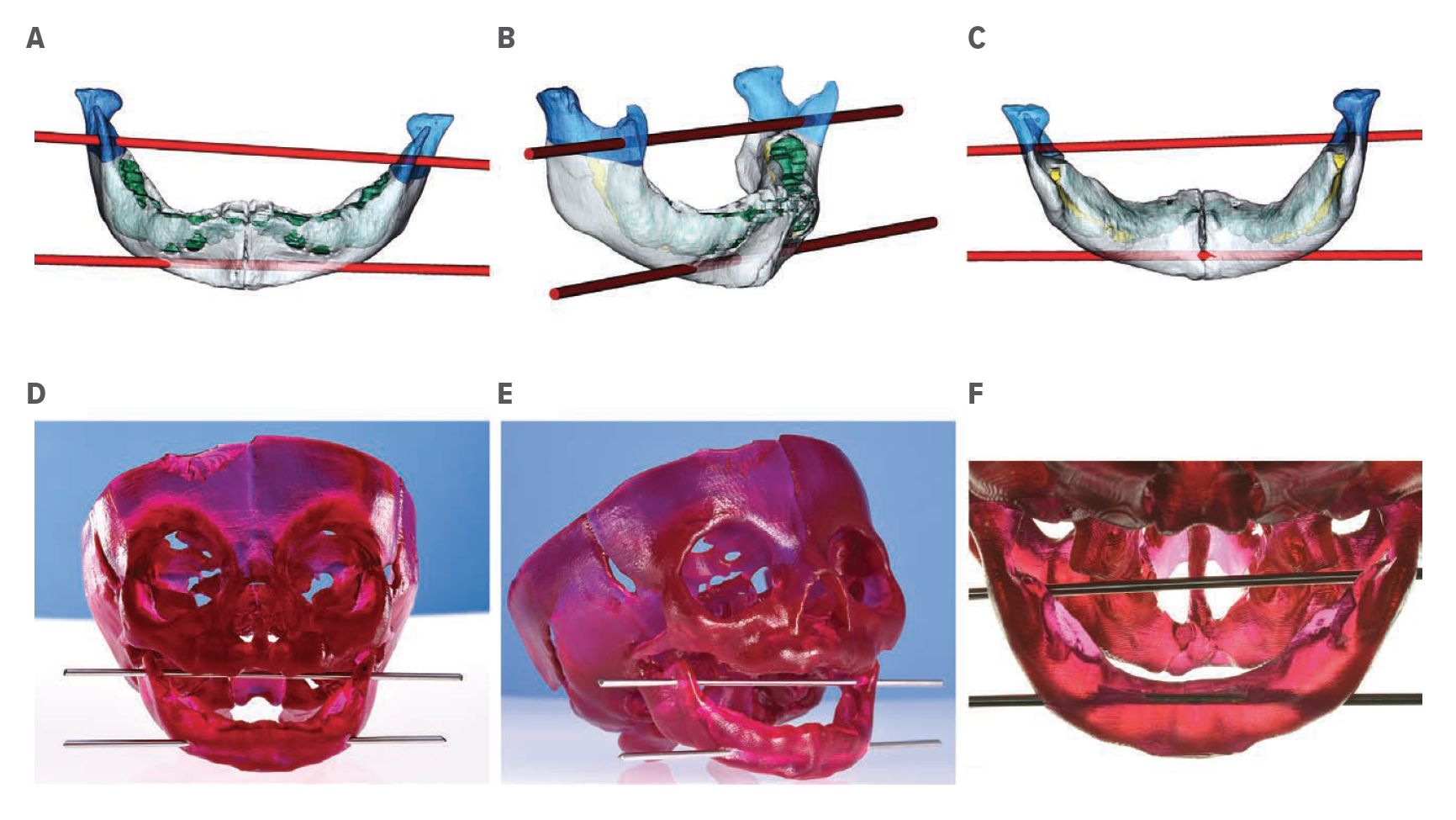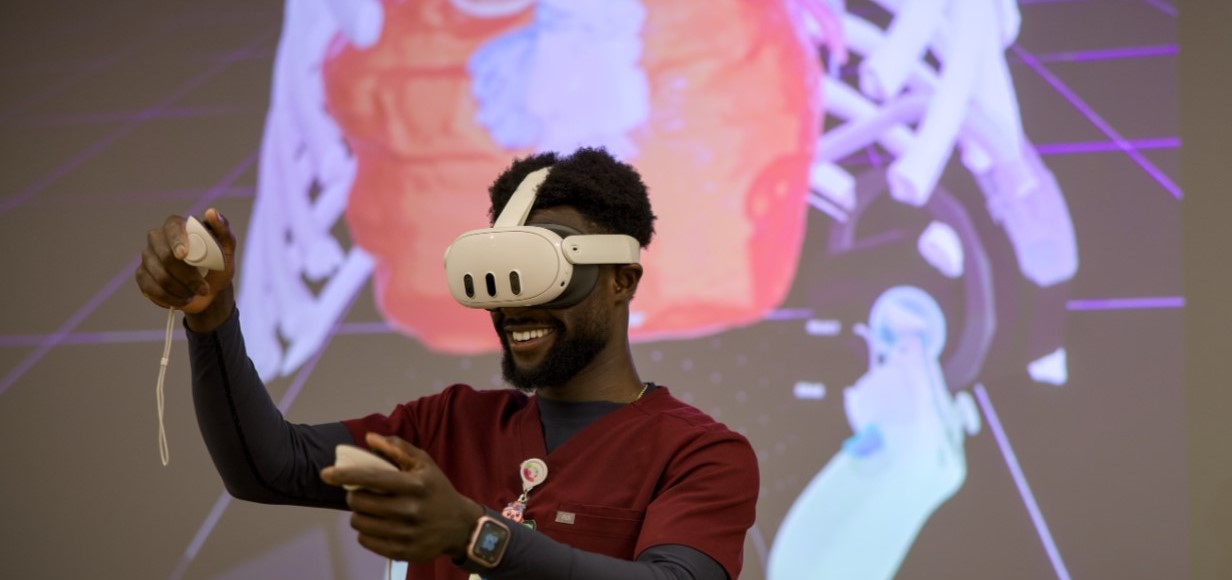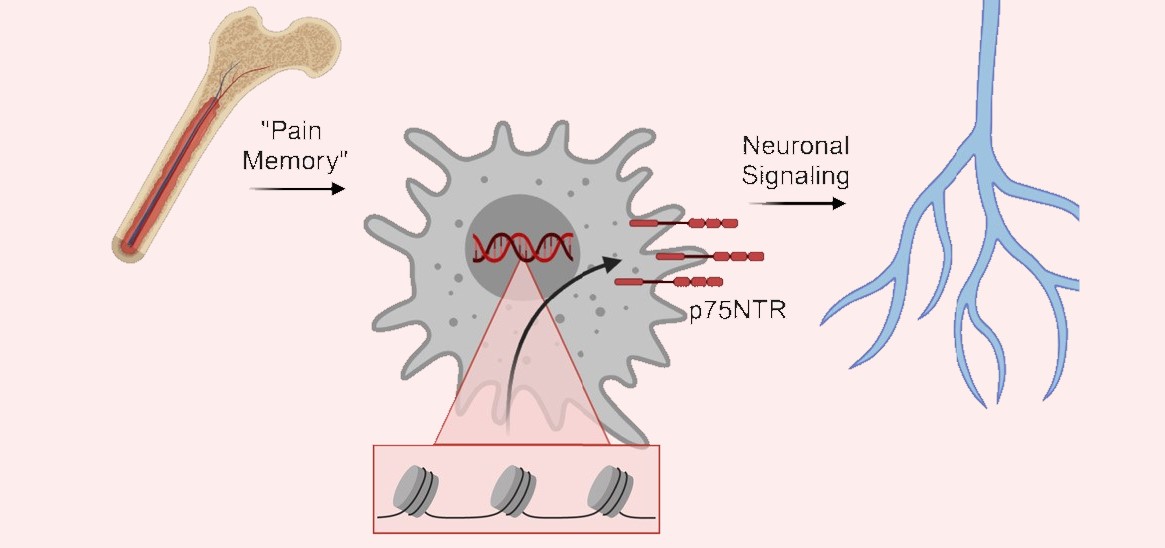Two-Pin Surgical Technique Improves Outcomes for Neonates with Robin Sequence Airway Obstruction
Research By: Brian Pan, MD | Haithem M. Elhadi Babiker, MD, DMD
Post Date: June 15, 2023 | Publish Date: June 15, 2023
Plastic Surgery | Top Scientific Achievement


A surgical technique studied and refined by plastic surgeons at Cincinnati Children’s provides a cost-effective approach to treating neonatal patients with severe micrognathia. The procedure also offers potential aesthetic advantages due to its limited incisions and scar placement.
Transfacial two-pin external mandibular distraction osteogenesis (MDO) treats Pierre Robin sequence, which affects one in 8,500 to 20,000 neonates. The condition is characterized by three conditions: micrognathia, glossoptosis, and airway obstruction. These conditions lead to mandibular hypoplasia and tongue-based airway obstruction (TBAO).
Traditional internal device MDO gradually lengthens the mandible. This pulls the tongue forward in a composite fashion. Most craniofacial centers now widely use this technique as a first line of intervention to avoid tracheostomy, says Brian Pan, MD, director of the Division of Pediatric Plastic Surgery.
Surgeons at Cincinnati Children’s use a two-pin approach with external placement. The benefits of this technique include:
- Limited dissection
- Minimized risk to the facial nerve
- No need for a second invasive procedure
- Reduced facial scarring
- Reduced operative time
“Our experience and multidisciplinary approach for managing patients with Pierre Robin sequence has established us as leaders, allowing us to tailor care for each of our patients,” Pan says.
The two-pin technique has proven to be highly effective for correcting severe TBAO in patients with micrognathia, and has expanded the armamentarium for treating infants with Robin sequence. It may be performed safely on neonates whose small size may preclude the use of internal distractor devices.
View more discoveries from 50 research divisions and areas
Return to the 2023 Research Annual Report main features
| Original title: | Transfacial Two-pin External Mandibular Distraction Osteogenesis: A Technique for Neonatal Airway Obstruction from Robin Sequence |
| Published in: | Plastic and Reconstructive Surgery Global Open |
| Publish date: | June 15, 2023 |
Research By








